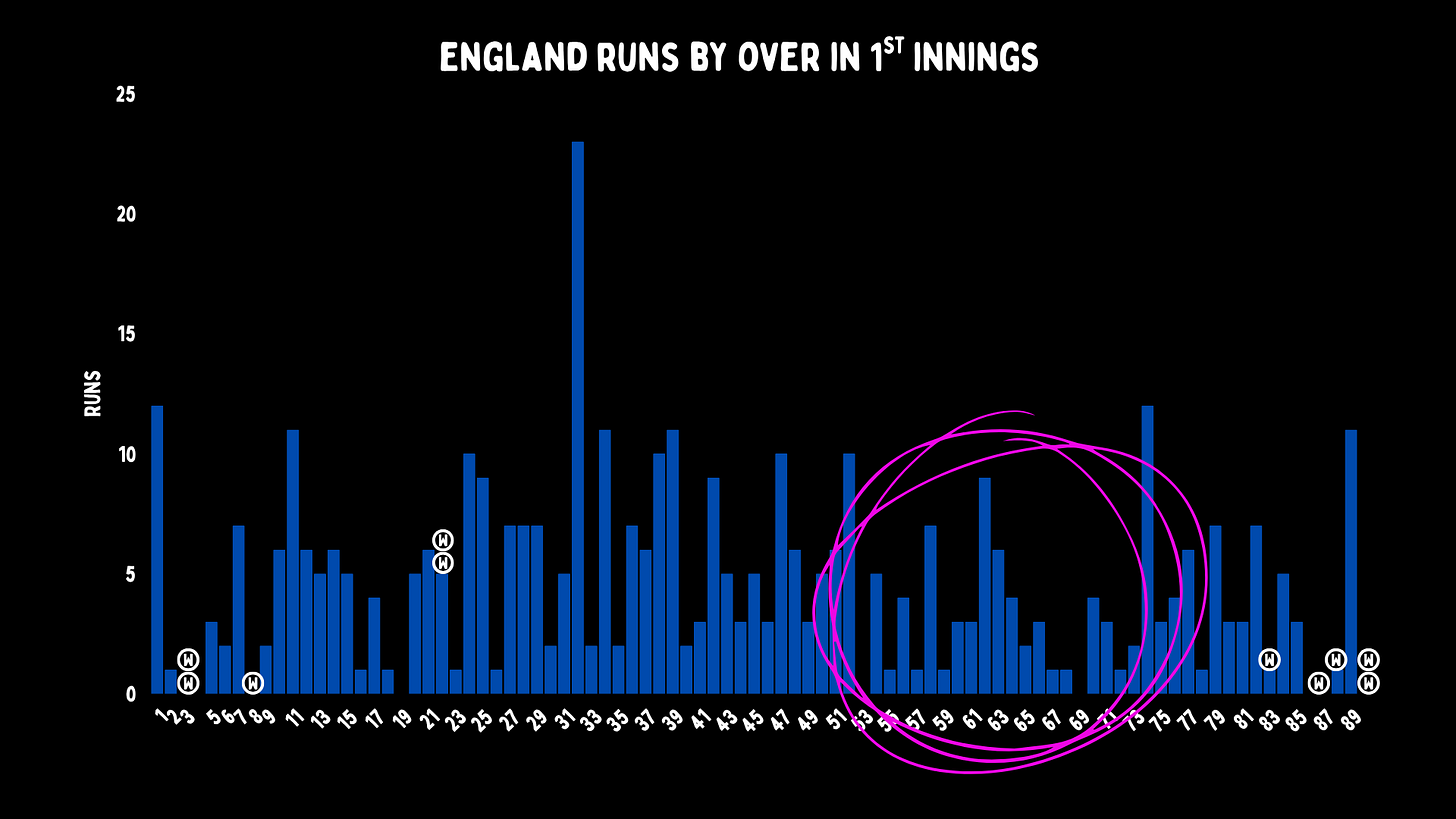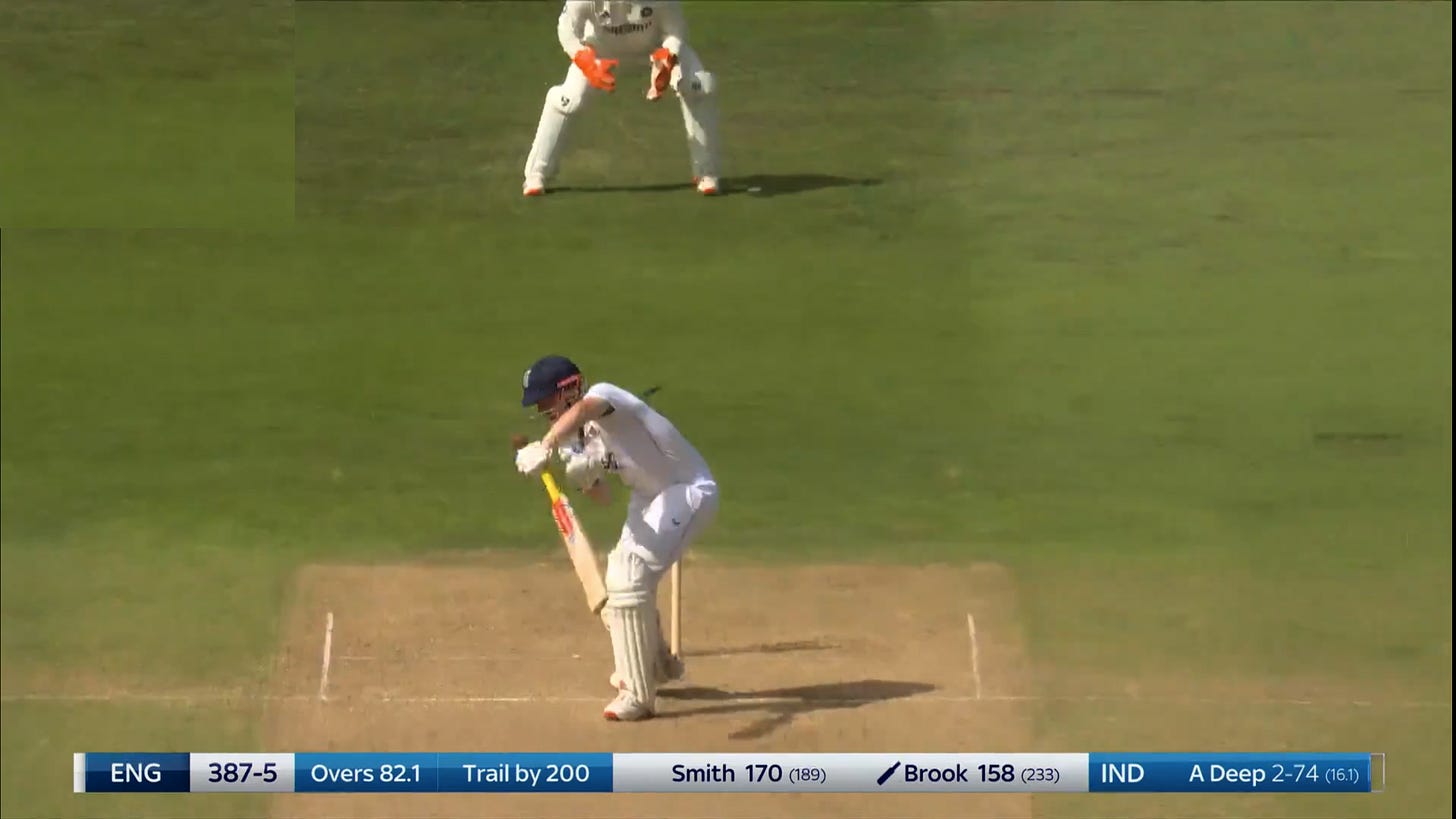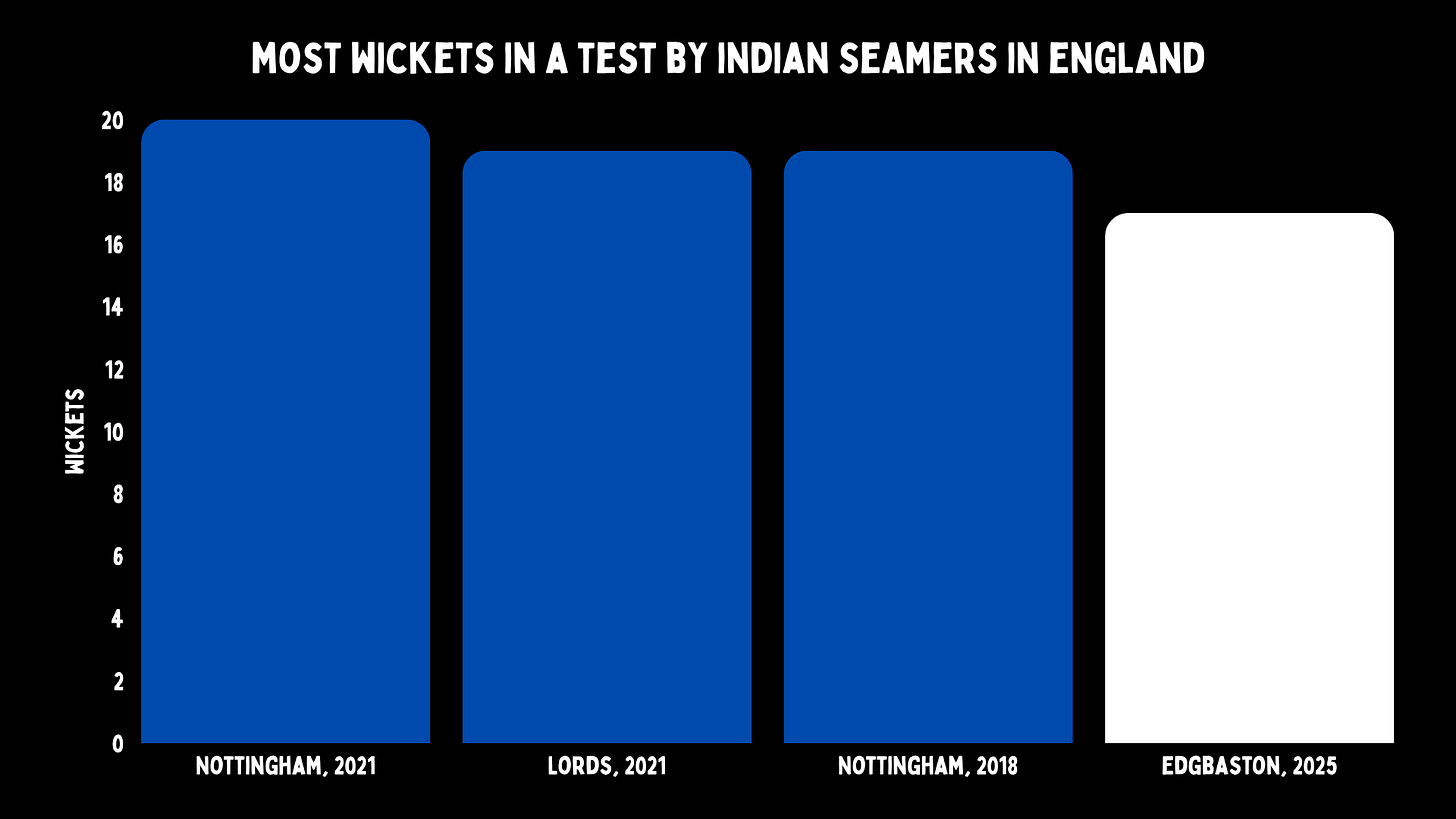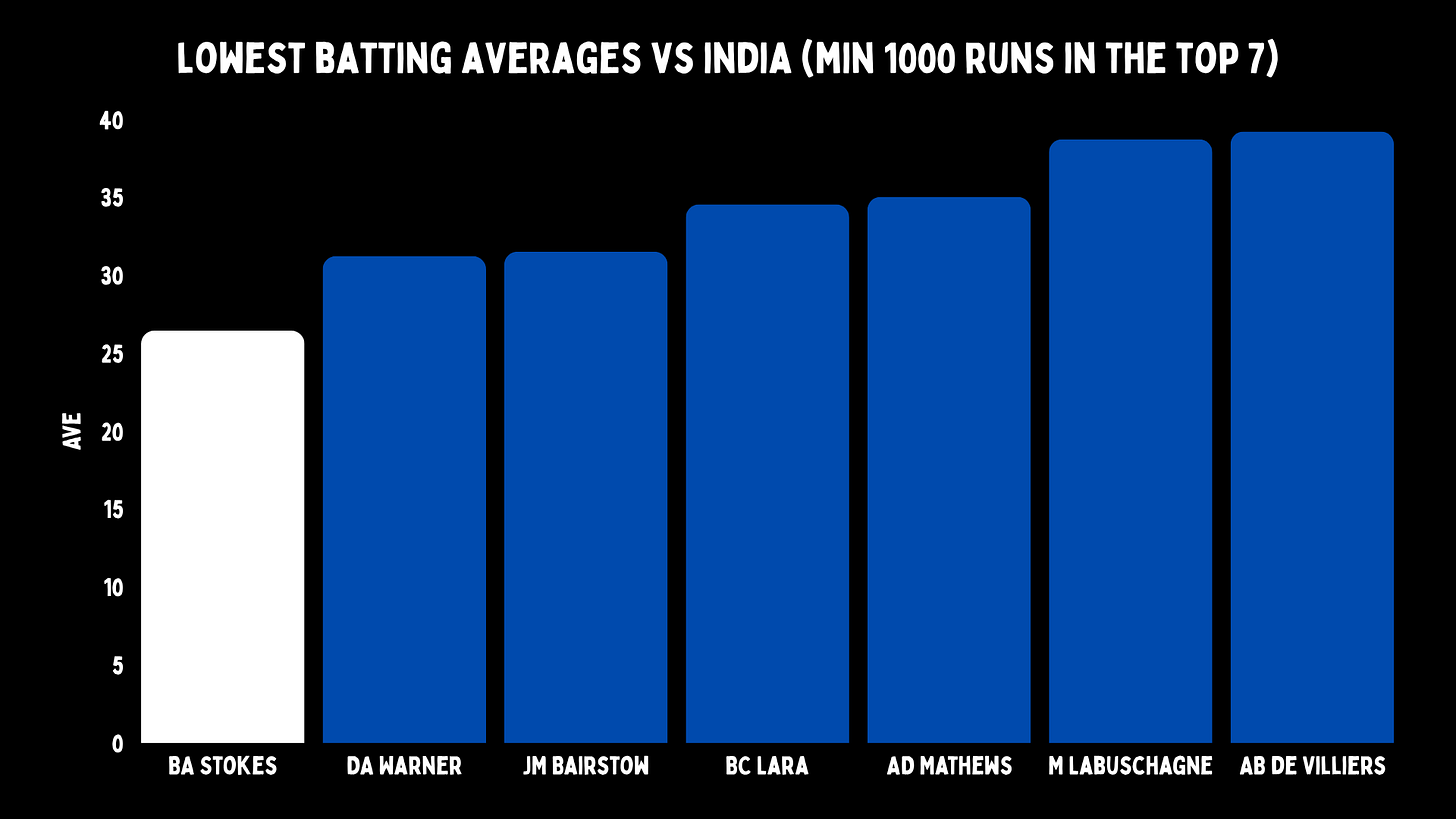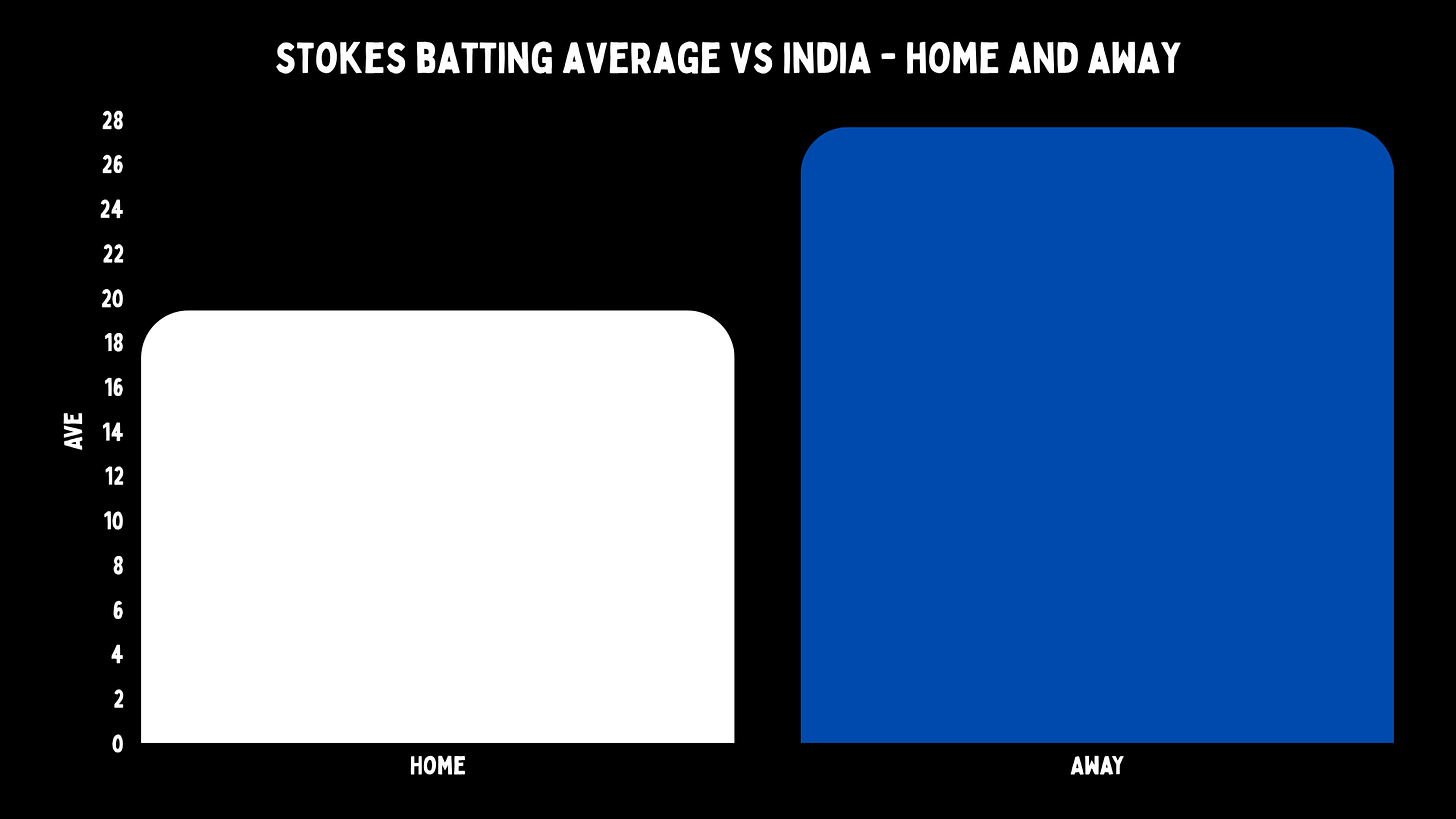How India hunted Stokes and England
Stokes’ team lose by 336 runs. The head, the body, the tail - they’re all beaten.
We are offering a 30% off deal for Art of Batting. Just click the link and use the code GOODAREAS30 at checkout. This works for orders and pre-orders. It’s a global discount, so it will work across Australia, Canada, India, UK and US sites.
Ben Stokes is a great player of short fast bowling. He’s in to bat in the 22nd over, England are in trouble, and Mohammed Siraj has the ball.
The great West Indian sides always hunted captains. They would mark out their man and then make it almost impossible for him to score, let alone survive. Their theory was simple: it’s hard to captain your side when you’re not doing well yourself. And so they stalked their prey and figured once they’d lopped off the head, the body would follow.
Mohammed Siraj took this literally. First ball is short and fast. It also breaks away off the pitch and fades towards the slips. All Stokes can do is edge through his fend to Rishabh Pant. One delivery, gone.
When Siraj finally stops his victory lap, Shubman Gill hugs him so hard he almost knocks him over. Stokes is not in form, he’s not the main threat, but he’s undoubtedly the head of the snake. And in one ball, he’s gone.
India came into this Test with four frontline bowlers, two allrounders, and the vibes of a team who wanted to draw at all costs. Assistant coach Ryan ten Doeschate was talking about getting to Lord’s no worse than 1-0 down. On top of that, this was a flat pitch. That has been the case all summer in County cricket too.
But this game broke down differently. Shubman Gill’s epic twin act - and the faster scoring rate - meant there was a chance for India to win this match and break England physically. And they went for both.
They still had to take 20 wickets, something they could not do - with Jasprit Bumrah - in the first Test. This time they had one advantage: they knew what the conditions would be like. Teams come to England expecting swing and seam. These days, they should get ready for flat wickets and soft balls.
From 2016–2021, when Broad and then the others learned the wobbleball, English pitches seamed around everywhere - even in the overs from 31-80. That was an anomaly. Before that, wickets were what they call CEO brown in the UK.
In 2022, things changed again. Two massive occurrences happened that year: Brendon McCullum inspired a new phrase in the dictionary, and the leather that Dukes used for their balls went soft. It meant that taking a wicket in the middle overs was tough, and it allowed for a very attacking side to cash in.
England has continued to whack, the balls are still going soft, and taking wickets in the 31-80 over period is really tough. Was this a fluke the first time, and then England realised it was awesome and asked the ball manufacturers to keep doing it? We know they have asked for good batting wickets, and we suspect also requested the comedically short boundaries Edgbaston had. Why not go all in and ask Dukes for the exact ball you want as well, when you are their biggest client?
None of this matters to India, they just have to get wickets. And so, if you look at their bowling in the first innings, they essentially bowled great with the two brand new balls on offer and struggled in between.
Edgbaston wasn’t the ideal hunting ground - flat terrain, soft conditions - but India were willing to wait.
After a disastrous period where they tried to bounce out Smith and Brook - before putting fielders on the leg side, they decided to go old school. They bowled wide of off stump. This is something we talked about with some of the new dynamos coming in - they struggle a little more with bowling wide of the wicket. And for a session, India managed to slow England down. Almost no one does that.
Instead of the ball flying around everywhere with two batters well and truly set, there was a go-slow. As if India were lulling them into a trap.
They were, as usually England would keep going very hard - scoring well over five an over. Instead, they stalled. This mattered, because it meant that India had some control as the second new ball was being taken. And if there is anything we know about this pitch, it loves the brand new ball. India rocked through them with it, and from that point completely dominated the game.
The Brook wicket from Akash Deep was where it all started. It was - not for the first time - a delivery where he got more seam than anyone else in the match. At times, he was getting more lateral movement than anyone was getting spin. He was basically unplayable.
At this point, England’s new-ball bowling looks a long way back from India’s. And that was without Bumrah. Prasidh Krishna looks like a stone-cold killer in the IPL, but he hasn’t quite bared his claws yet in Test cricket. But even he has had spells in this series that make you remember how vicious he could be. Siraj stepped up massively as well. Seemingly back to his mini-spree-taking best, and of the gravity-altering slipstream of Bumrah.
But it was more than just new-ball bowling. India did try other things. Their use of the crease in this match was brilliant. You can see just how wide Akash was in the Root wicket. That he managed to move the ball away means it was unplayable because of this angle.
It wasn’t a perfect bowling performance, but because in both innings they took so many new-ball wickets, England were unbalanced all game. The most important top-order wicket is Ben Duckett, because the other two give you chances. Akash took him twice.
It is almost poetic that two Indian players who started slowly, as normal Test cricketers usually do, would have their coming out party together. Gill with runs, and Akash with wickets. Those of us on the “he bowled well, actually” train from his time in Australia and even before can sleep soundly now. Akash Deep has the ability to weaponise the seam like few in cricket.
But the Dukes seams no longer last forever.
Five wickets down today, India were running into two major problems: the ball was now soft, and they didn’t have as many overs available of the second new one due to the rain.
Plus, they had fourth-innings Stokes in front of a big crowd, with a mission.
But he would have to face a lot of balls, and this year he just hasn’t batted much. He’s yet to face 200 professional deliveries. While he’s slimmed himself down to a dancer’s body to improve his bowling, he’s barely batted.
On top of that, Stokes has never made many runs against India. It makes sense, as he’s a lefty who had to travel to spinning wickets to face R. Ashwin.
Except Stokes has struggled far more against India at home. That makes so much less sense.
It is a baffling record, but when India have the ball, Stokes doesn’t last long on his own wickets.
It gets worse, because his play against spin has also declined significantly. So when Ravi Jadeja came over the wicket and kept dumping the ball into the footmarks, it was basically like watching an ambush predator in the bushes, with the innocent plant eater completely unaware. It looked like Stokes could get out any ball. But he survived that.
Against pace, he looked just as dicey. But the pea shooters missed his stumps, he managed to not drag the ball back on, and the edges didn’t find the fielders. He looked unsure of his batting throughout.
Stokes survived, but it was just that. He was twitchy, unsure, his ears almost on alert, waiting to hear any sign of danger.
So much so, that India stopped trying to dismiss Jamie Smith. They gave the England captain - the hero of Headingley, the lion of Lord’s - a single, to keep him on strike. And Stokes was so put off he tried to steal a second and almost ran himself out.
Then, when facing Washington Sundar, Stokes is trying to get off strike again by flicking the ball to deep backward square. But Shubman Gill closes off the single option, bringing the fielder up, basically circling him so there was no escape.
First ball after, he’s almost caught trying to force the ball through the gap. The next delivery had no fangs or fury - just a quiet twist of the blade, precise, and lethal. Simply a well-delivered offspinner on the stumps that straightens. But Stokes is late, stuck, and is unsure if he’s even hit the ball.
Once the head was severed, the tail thrashed briefly, but it was already over. India simply played with their food before executing the kill. Stokes’ team lose by 336 runs. The head, the body, the tail - they’re all beaten.




